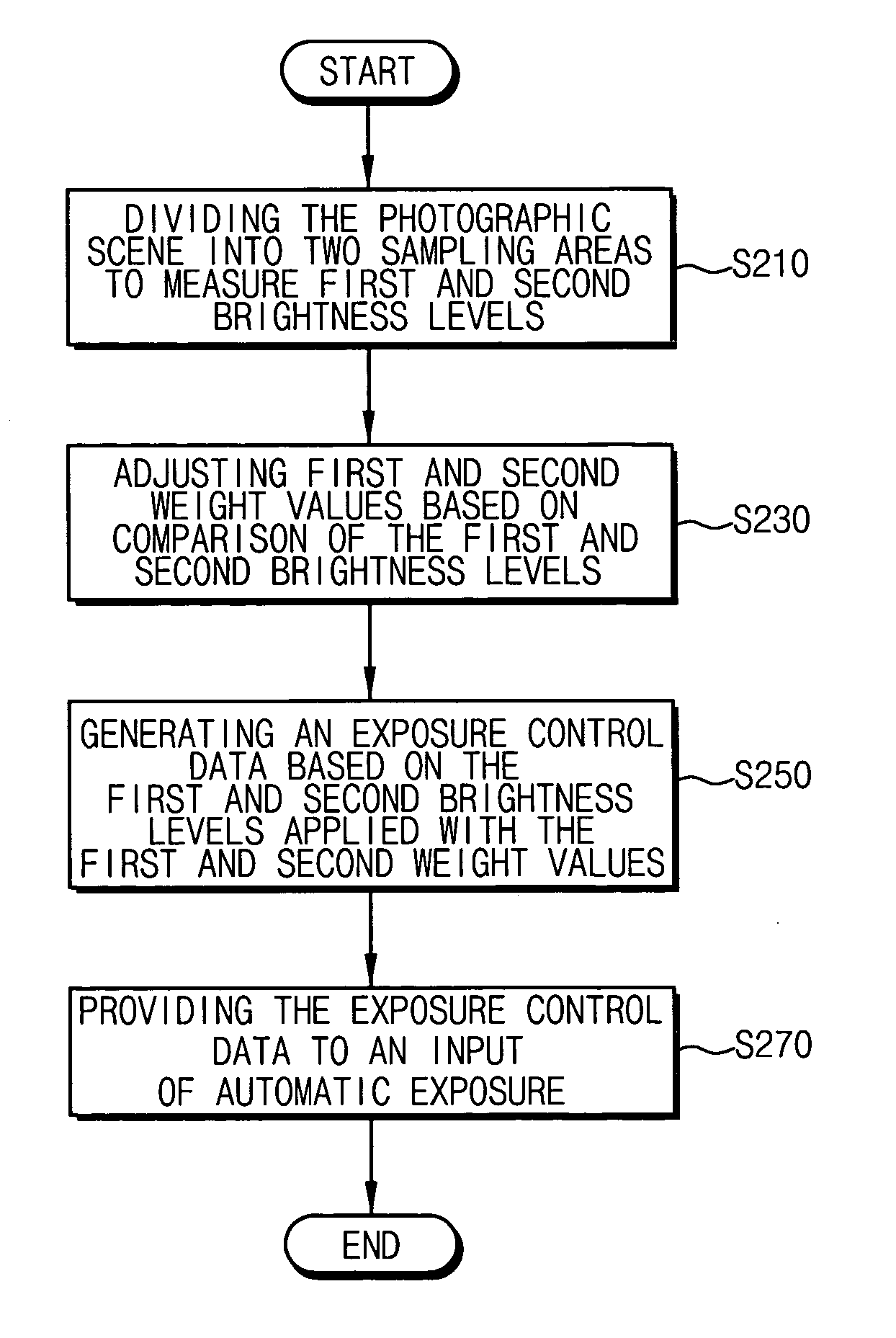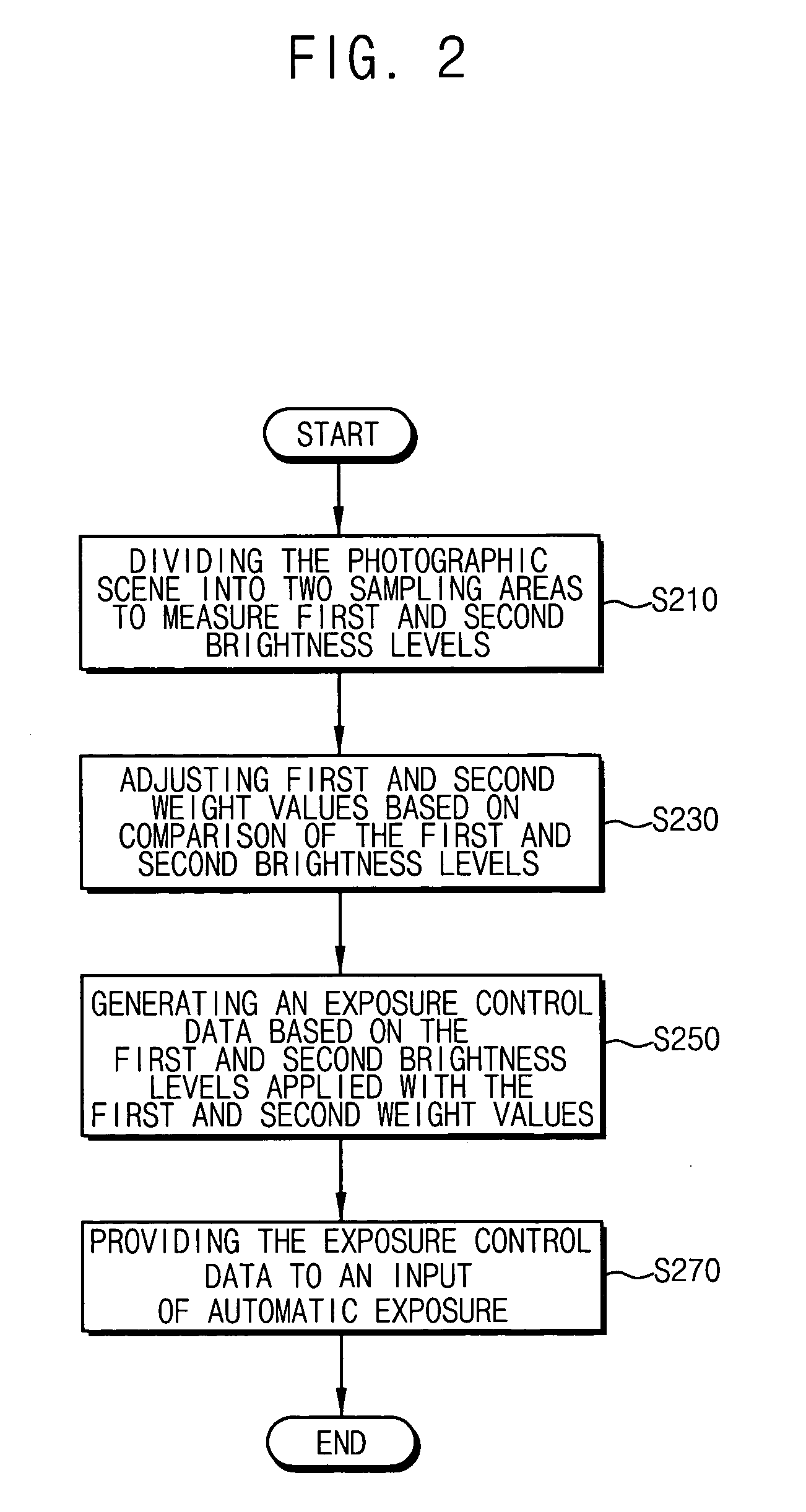Method and apparatus for controlling automatic exposure in a camera
a technology of automatic exposure and camera, applied in the field of camera systems, can solve the problems of conventional automatic exposure not effectively compensating for front-light or back-light scenes, image may be too bright, image may be too dark, etc., and achieve the effect of increasing the exposure tim
- Summary
- Abstract
- Description
- Claims
- Application Information
AI Technical Summary
Benefits of technology
Problems solved by technology
Method used
Image
Examples
Embodiment Construction
[0032]FIG. 1 shows a captured image divided into a first area 30 and a second area 40, according to an example embodiment of the present invention. FIG. 2 is a flowchart of steps for control of automatic exposure in a camera, according to an example embodiment of the present invention.
[0033] Referring to FIG. 1, the first area 30 of a captured image in a camera includes a main photographed subject, and the second area 40 includes a background scene, in one embodiment of the present invention. Generally, the main subject to be captured is mostly positioned in a central area that is the first area 30 of the captured image. In that case, the second area 40 corresponds to a peripheral area surrounding the main subject. In addition, the present invention may be practiced when the captured image is divided into two or more areas to measure respective brightness levels thereof.
[0034] Referring to FIG. 2, a first brightness level is extracted from the first area 30, and a second brightnes...
PUM
 Login to View More
Login to View More Abstract
Description
Claims
Application Information
 Login to View More
Login to View More - R&D
- Intellectual Property
- Life Sciences
- Materials
- Tech Scout
- Unparalleled Data Quality
- Higher Quality Content
- 60% Fewer Hallucinations
Browse by: Latest US Patents, China's latest patents, Technical Efficacy Thesaurus, Application Domain, Technology Topic, Popular Technical Reports.
© 2025 PatSnap. All rights reserved.Legal|Privacy policy|Modern Slavery Act Transparency Statement|Sitemap|About US| Contact US: help@patsnap.com



